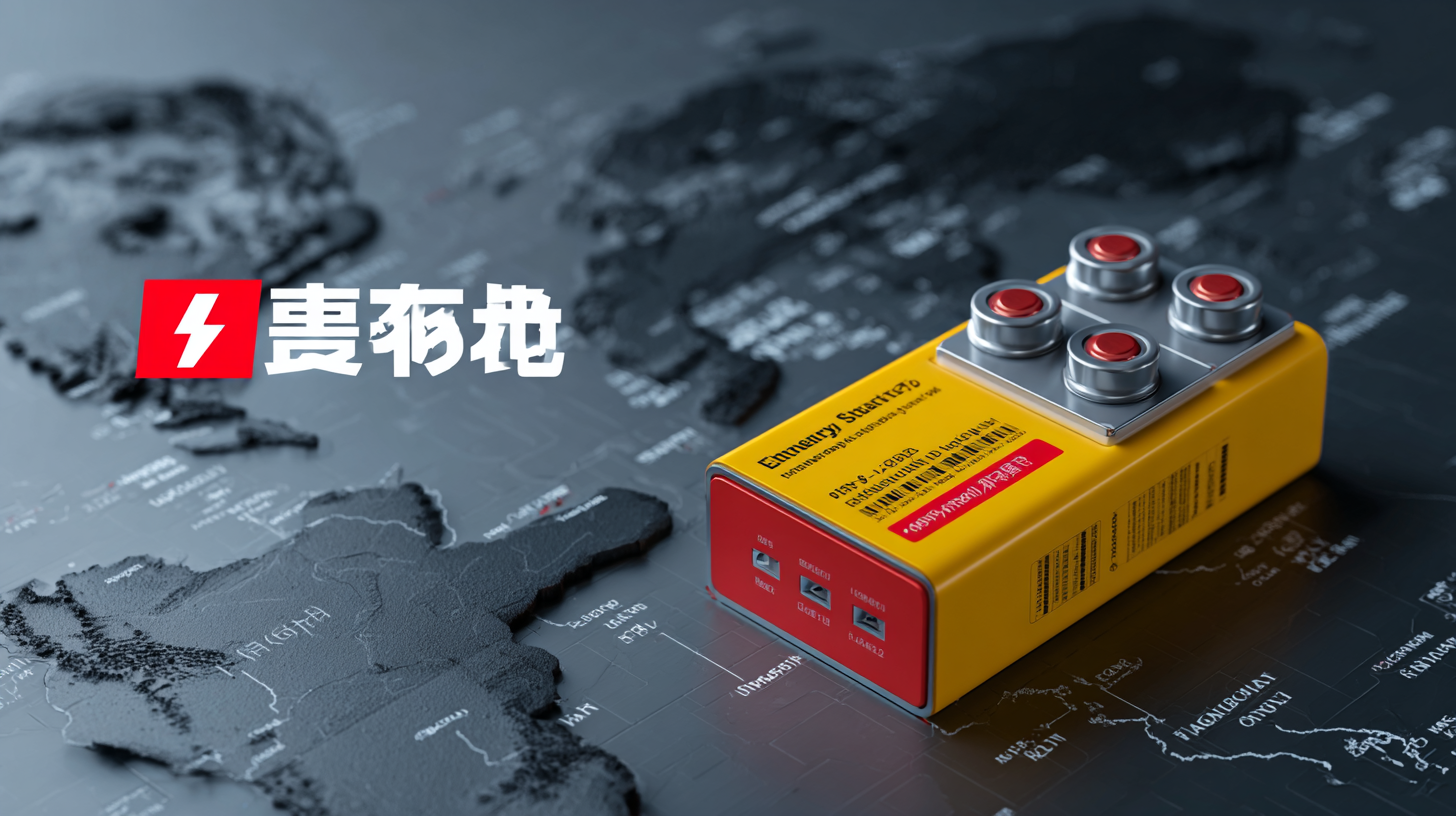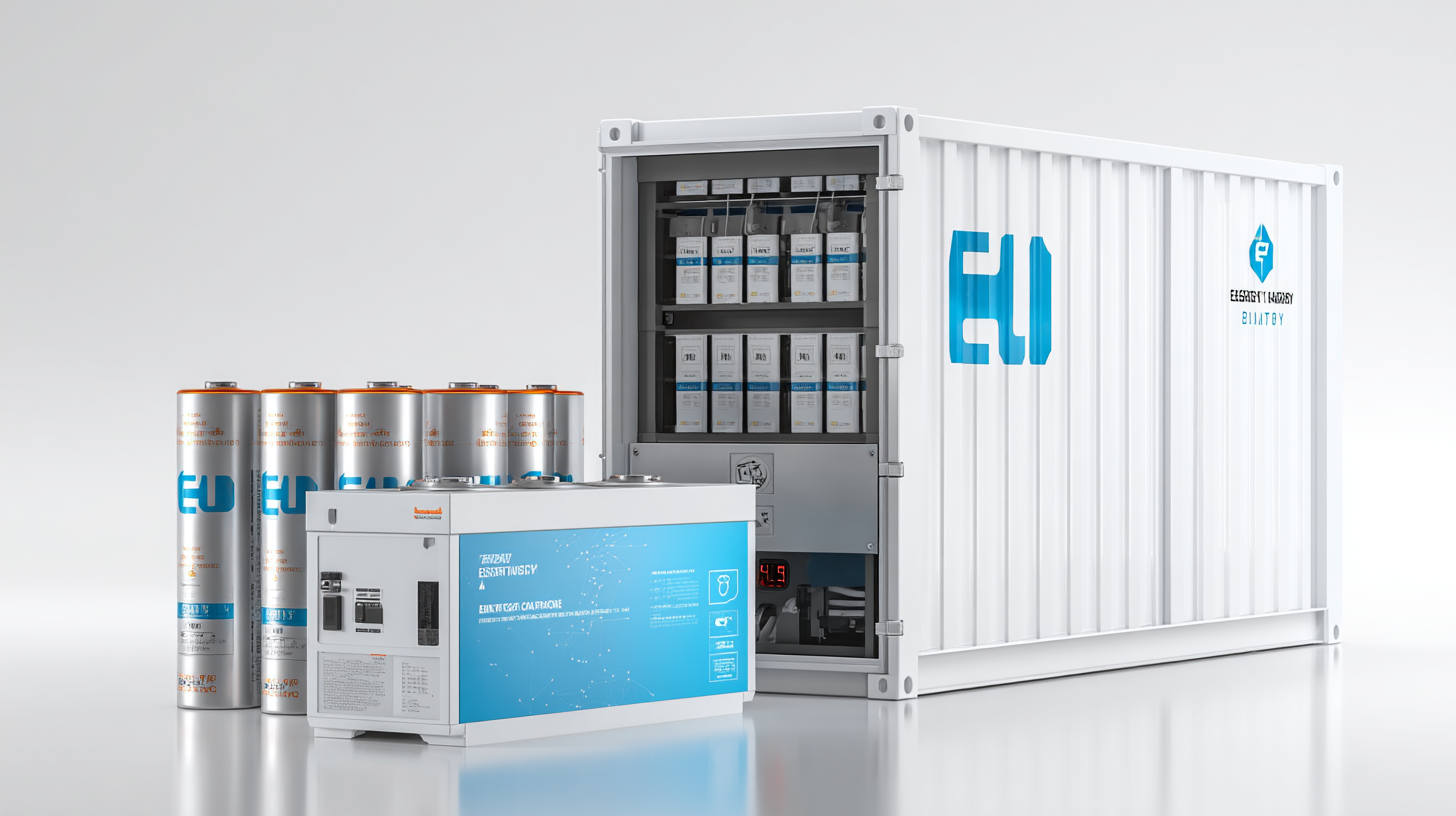Navigating the Setbacks in Energy Storage Battery Standards: A Global Perspective
The global energy landscape is undergoing significant transformations, with Energy Storage Battery technologies at the forefront of this revolution. According to a recent report by Fortune Business Insights, the global energy storage market is projected to reach approximately $32.37 billion by 2025, with a compound annual growth rate (CAGR) of 25.7% from 2018 to 2025. As demand for renewable energy sources surges, the importance of standardized energy storage solutions becomes increasingly critical. However, navigating the setbacks in Energy Storage Battery standards poses challenges that can hinder progress and investment in this sector. The need for harmonized regulatory frameworks and defined performance metrics is essential to foster innovation and ensure safety.

This blog will explore these challenges from a global perspective, analyzing the current state of the industry and providing real-world examples that highlight the importance of robust standards in advancing energy storage technologies.
Common Pitfalls in Energy Storage Battery Standards: A Checklist for Stakeholders
The energy storage battery sector is witnessing rapid growth, expected to reach a market size of $100 billion by 2026, according to the International Energy Agency (IEA). However, as stakeholders engage in this expanding market, they often encounter a series of common pitfalls related to battery standards. One of the significant challenges is the lack of harmonization across regions. For instance, the European Union has stringent regulations that differ significantly from the more lenient standards in North America and Asia. This discrepancy can lead to increased costs and delays for manufacturers trying to navigate multiple compliance pathways.
Another critical issue is the inconsistency in safety and performance testing methods. The Institute of Electrical and Electronics Engineers (IEEE) reports that 30% of battery failures are attributed to inadequate testing and quality assurance processes. Stakeholders must prioritize thorough testing protocols that align with global standards to mitigate risks and enhance reliability. Furthermore, staying updated with evolving standards is essential; a failure to do so can result in regulatory non-compliance and potential market exclusions. Implementing a comprehensive checklist that addresses these pitfalls can not only streamline operations but also position stakeholders for long-term success in the dynamic energy storage landscape.
Navigating the Setbacks in Energy Storage Battery Standards: A Global Perspective
| Aspect | Description | Common Issues | Recommendations |
|---|---|---|---|
| Standardization | Lack of uniform standards across different regions. | Inconsistent regulations can lead to market fragmentation. | Advocate for international standardization efforts. |
| Safety Protocols | Inadequate safety standards for battery production. | Risks of battery failure and safety hazards. | Implement rigorous safety testing and compliance verification. |
| Lifecycle Assessment | Insufficient guidelines for environmental impact. | Limited data on recycling and disposal processes. | Develop comprehensive lifecycle assessment frameworks. |
| Performance Metrics | Variability in testing methods across markets. | Difficulty in comparing battery performance data. | Establish standardized performance metrics for comparison. |
| Regulatory Compliance | Compliance challenges due to changing regulations. | Increased costs and time delays for manufacturers. | Keep abreast of regulatory changes and adapt processes accordingly. |
Key Regulatory Frameworks: Understanding Global Norms for Energy Storage
As the demand for energy storage solutions grows, understanding the global regulatory frameworks surrounding battery standards becomes crucial. According to a recent report by the International Energy Agency (IEA), the global energy storage market is projected to reach 1,200 GWh by 2040, underscoring the need for standardized practices to ensure safety, performance, and interoperability across various technologies. Countries around the world are establishing regulations that cater to their unique energy landscapes, from Europe’s rigorous CE marking requirements to the more flexible approaches seen in the U.S. under the Department of Energy.

The International Electrotechnical Commission (IEC) plays a pivotal role in setting international standards for energy storage systems, with specific guidelines for lithium-ion batteries that address safety concerns and efficiency metrics. Aligning these standards is essential as companies look to enter multiple markets; differing regulations can lead to significant compliance costs, potentially stifling innovation. Recent studies have shown that harmonizing global battery standards could reduce costs by up to 10%, making energy storage more accessible and paving the way for sustainable energy solutions worldwide. As we navigate these regulatory complexities, staying informed about key norms will be essential for stakeholders aiming to thrive in this rapidly evolving sector.
Best Practices for Compliance: Ensuring Quality in Battery Standards
As the global commitment to decarbonization intensifies, the electric vehicle battery market faces mounting pressure to comply with increasingly stringent standards. Ensuring quality in battery standards is not only critical for performance but also for public safety and environmental sustainability. Best practices in compliance involve a thorough understanding of testing standards, which can significantly influence the acceptance of electric vehicles in the market. Adopting responsible purchasing practices among manufacturers is essential, allowing for a shared commitment to sustainable processes across the supply chain.

Moreover, innovative methods such as nondestructive testing techniques are becoming integral to the battery development phase. This not only ensures the batteries meet required safety standards but also facilitates a comprehensive evaluation of their longevity and performance. Industry collaborations, like those established by testing committees, enable companies to share insights and stay aligned on the latest compliance requirements. By implementing these best practices, the industry can advance towards more reliable and safer energy storage solutions, ultimately bolstering consumer confidence in electric vehicles and their associated technologies.
Navigating Innovations: Adapting Standards to Emerging Battery Technologies
As the energy storage landscape evolves, so too must the standards that govern it. The rapid pace of innovation in battery technologies, such as solid-state batteries and lithium-sulfur systems, necessitates a reevaluation of existing norms. According to a recent report by the International Energy Agency (IEA), the energy storage market is expected to grow at a compound annual growth rate (CAGR) of 30% from 2021 to 2026, emphasizing the urgency for adaptive standardization. This swift growth not only reflects the increasing reliance on renewable energy sources but also highlights the potential risks posed by inadequate regulation.
Emerging battery technologies offer significant advantages, including higher energy densities and improved safety profiles, yet they also present challenges in certification and compatibility. The ability to integrate diverse technologies while ensuring safety and performance is critical. For instance, a report from BloombergNEF suggests that the cost of lithium-ion battery packs fell to $132 per kilowatt-hour in 2021, yet as new chemistries come into play, standardization efforts must keep pace to mitigate inconsistencies across the supply chain. Industries must collaborate globally to create adaptable standards that not only support innovation but also ensure a secure, sustainable energy future.
Navigating Setbacks in Energy Storage Battery Standards: A Global Perspective
This chart illustrates the progress of standardization efforts in various regions for energy storage battery technologies over the past five years. The focus is on the adoption rates of different standards that address innovations in battery technology.
Strategies for Collaboration: Engaging Global Partners in Battery Standardization
In the rapidly evolving landscape of energy storage technologies, the need for standardized battery systems has never been more critical. Engaging global partners is essential to devise effective strategies for battery standardization. Collaborative efforts among industry stakeholders, including manufacturers, researchers, and regulatory bodies, can foster the development of a cohesive framework that addresses the varying requirements across different markets. By sharing best practices and aligning on performance metrics, organizations can create a robust set of standards that drive innovation while ensuring safety and reliability.
Furthermore, establishing international consortia can facilitate knowledge exchange and promote the adoption of uniform standards. These collective platforms can serve as forums for discussing technical challenges, addressing regulatory hurdles, and sharing research findings. By uniting efforts on a global scale, participants can not only enhance the quality of battery products but also accelerate the transition to renewable energy solutions. Ultimately, through collaborative strategies, the industry can effectively navigate setbacks and work towards a future where energy storage systems are safer, more efficient, and widely accepted worldwide.
